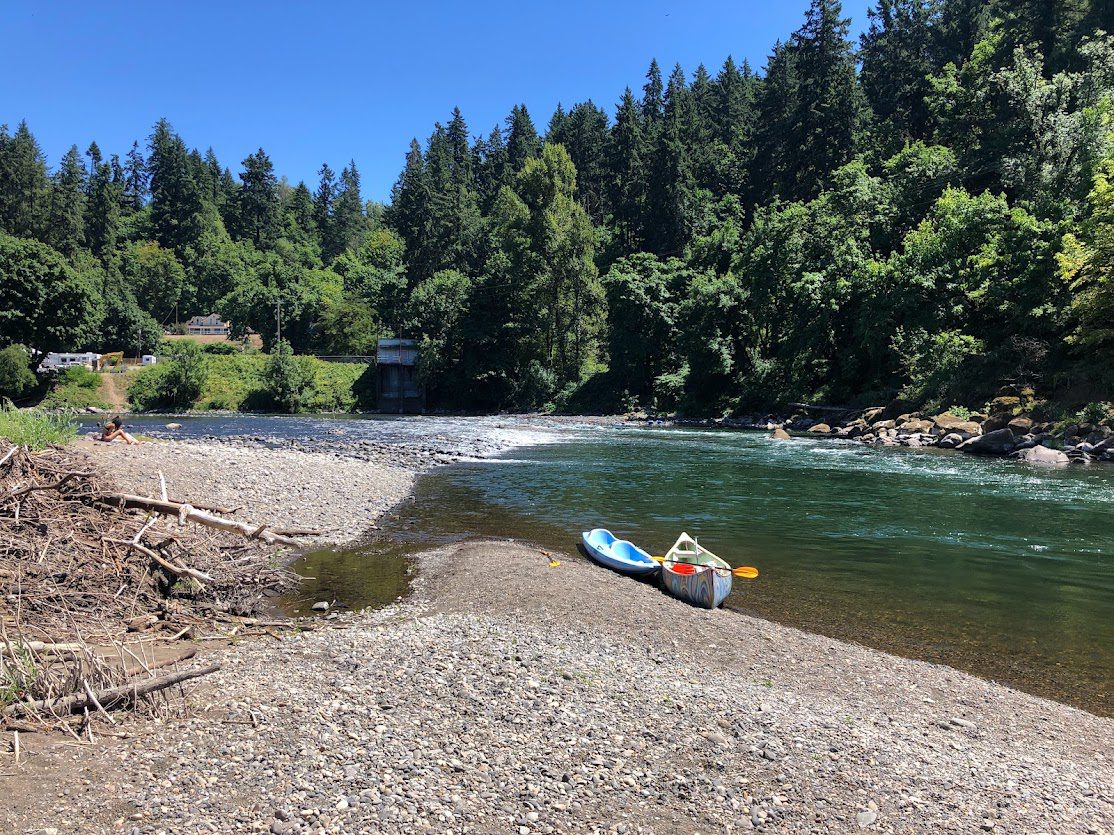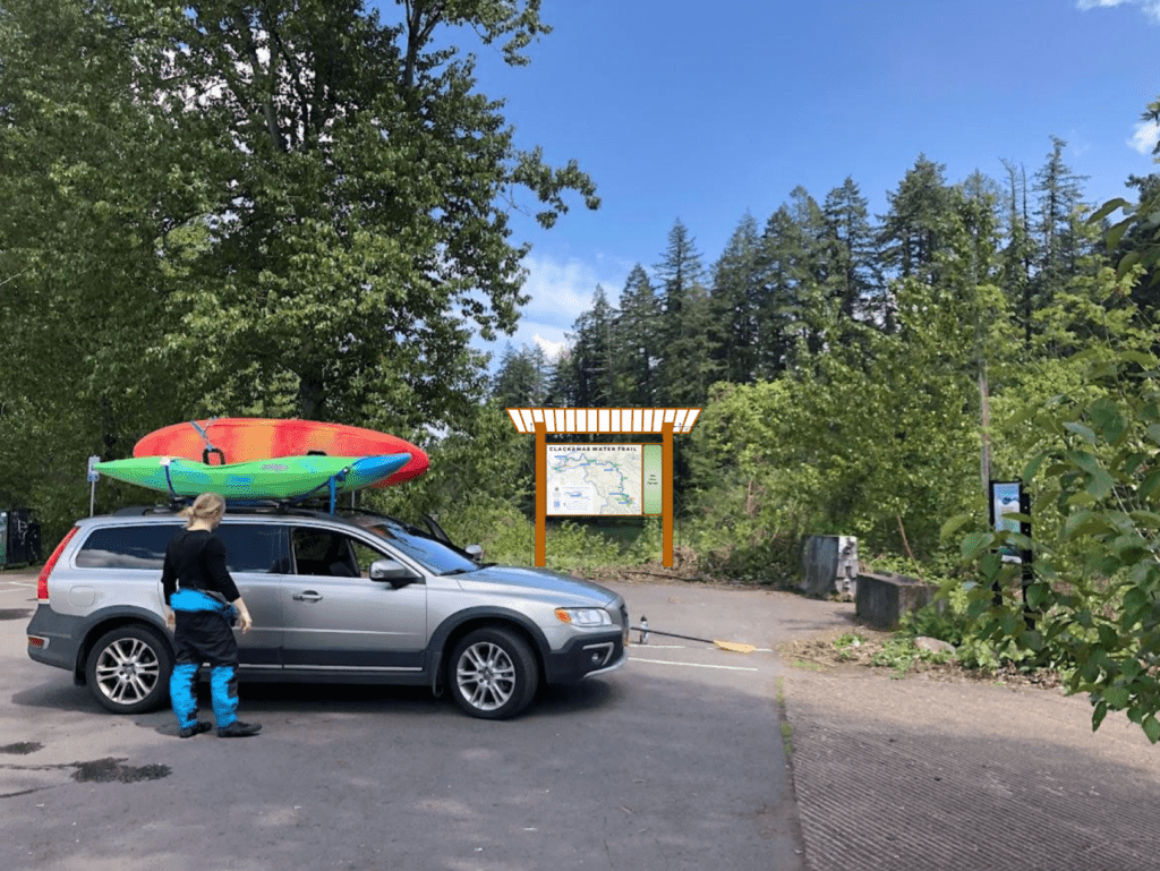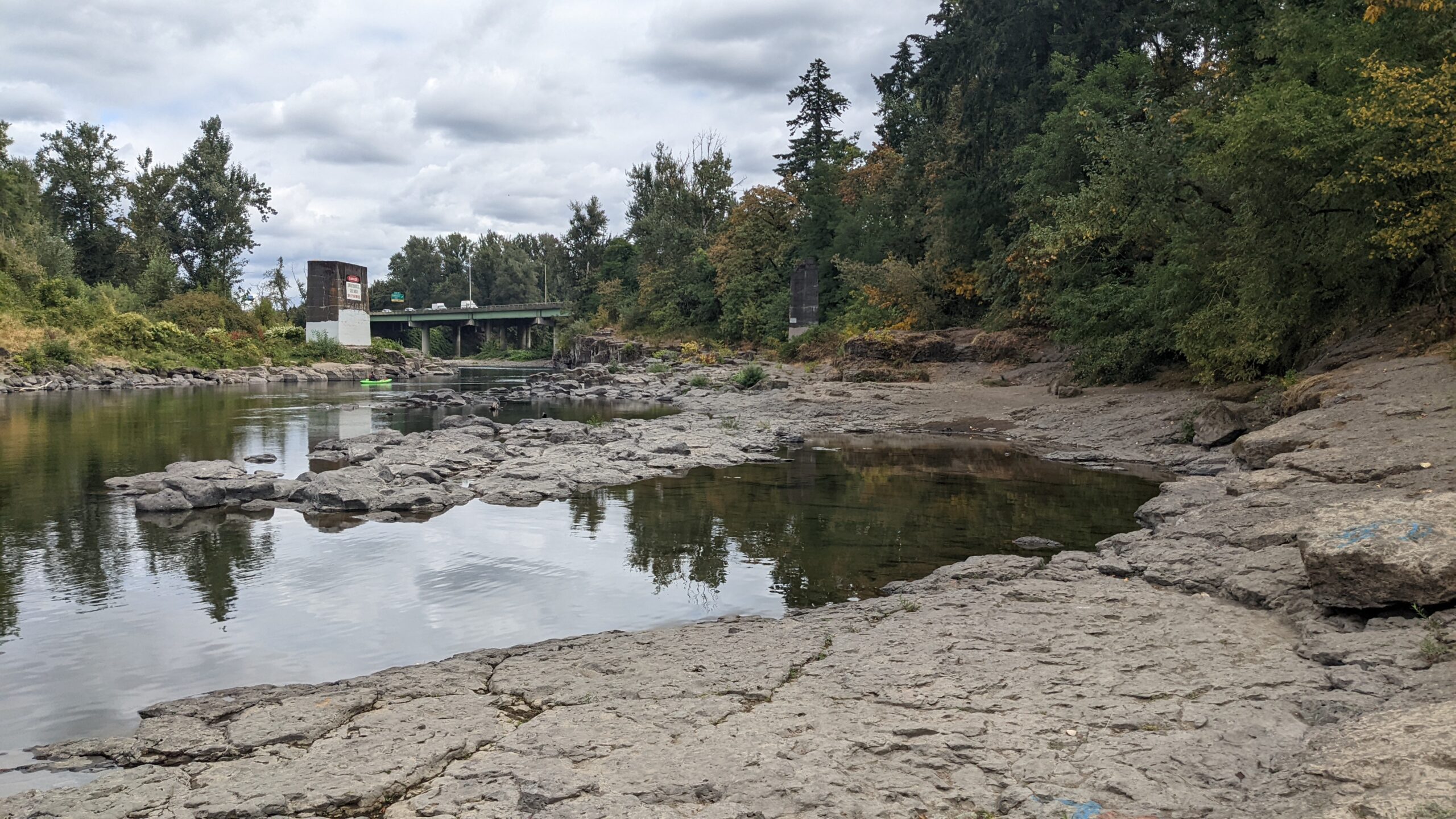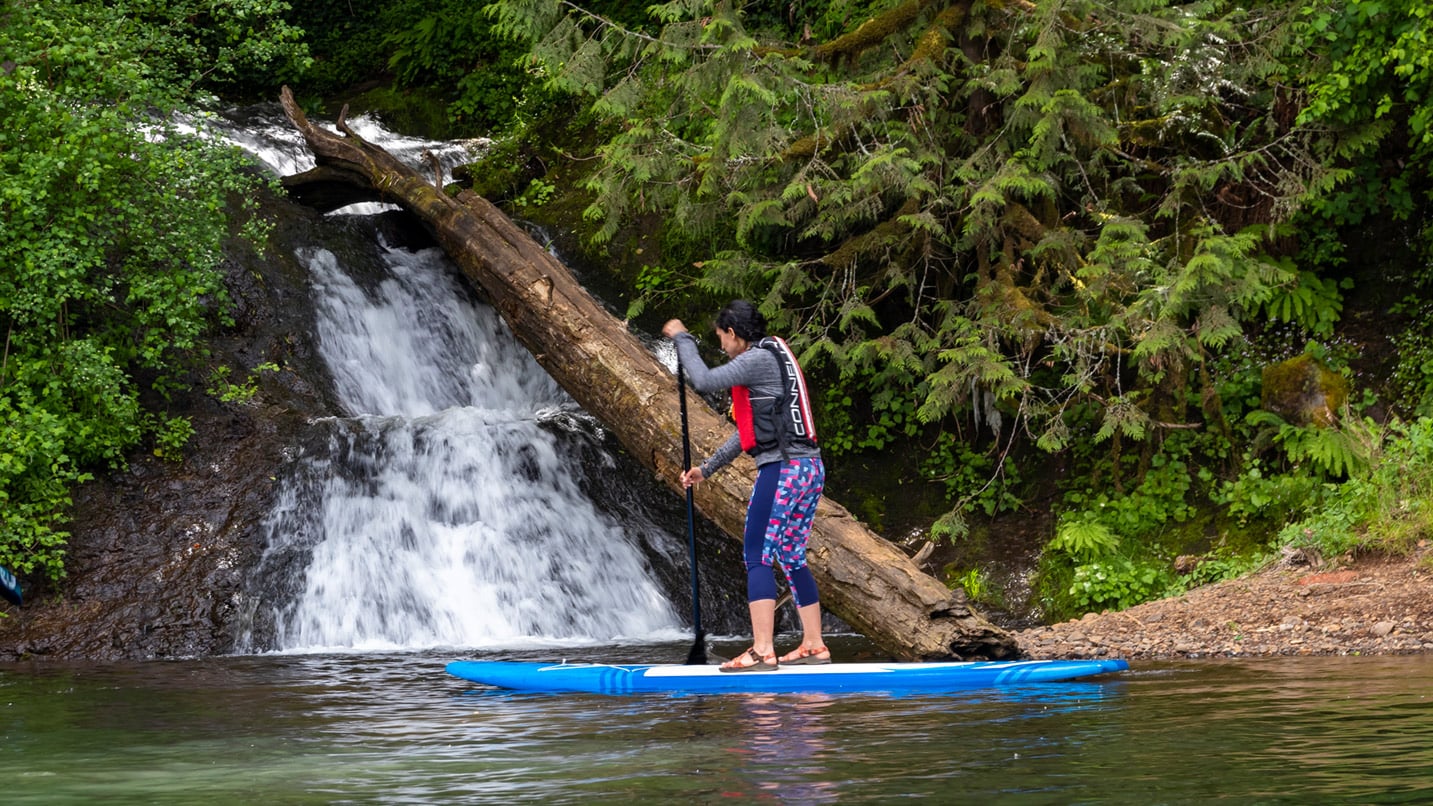What is ‘Running a Shuttle?’
‘Running a shuttle’ refers to coordinating vehicles that carry boats, gear and people to the put-in and take-out of a river trip. This is a requirement for any trip down a river, and it can be achieved in a number of ways. See below for the main strategies available for the Clackamas Water Trail.
The term ‘running the shuttle’ is likely derived from a mixture of ‘running’ a river and ‘shuttling’ gear and people. You ‘run’ a river (usually when you are paddling, not floating) by traveling down a section or all of the main part of a river. The trip is also called a ‘river run.’ It became a natural thing when speaking of the driving of boats, gear and/or people as a ‘shuttle run,’ or ‘running the shuttle.’
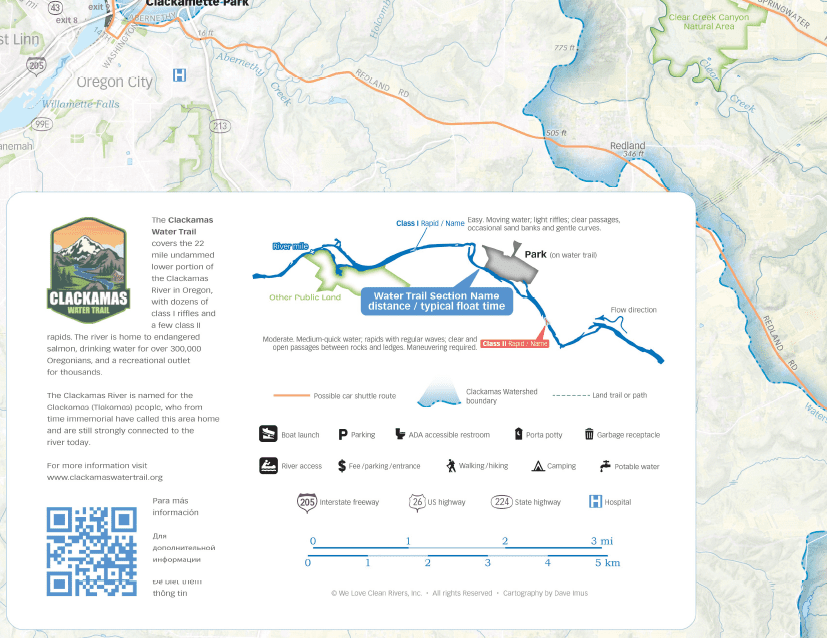
First things first: where can I park?
Before planning your shuttle, think about where you will park to access the river at the start (put-in) and end (take-out) of your ‘run’ or float.
There are nine parks with ten official access points on the lower Clackamas Water Trail. Depending how long you intend to float or paddle, what type of whitewater you hope to encounter, and other factors, you will steer towards one of a few possible itineraries (read more at www.clackamaswatertrail.org).
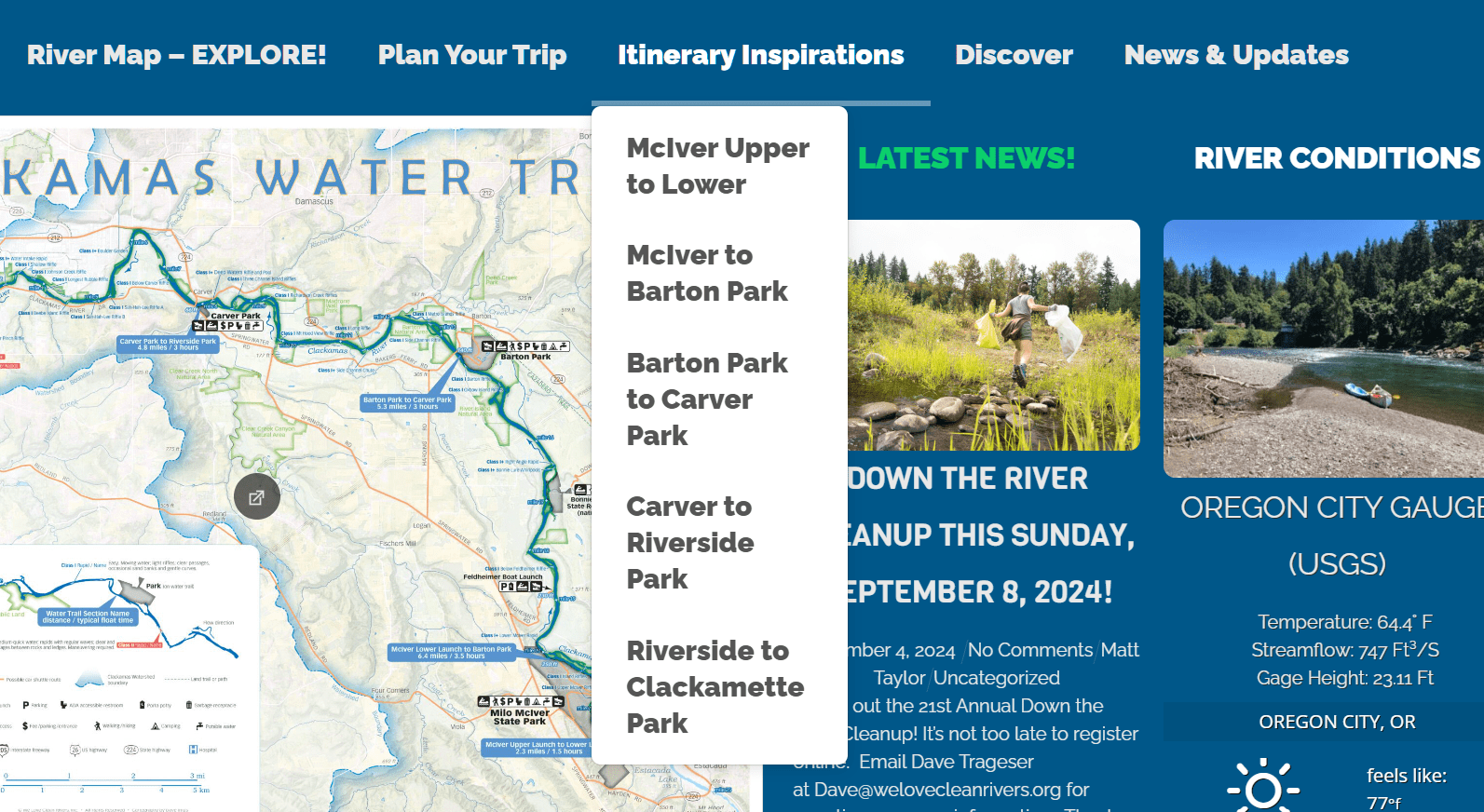
Clackamas Water Trail parking options
The following table provides additional information for helping make the choice of where to park, and to start planning your shuttle.
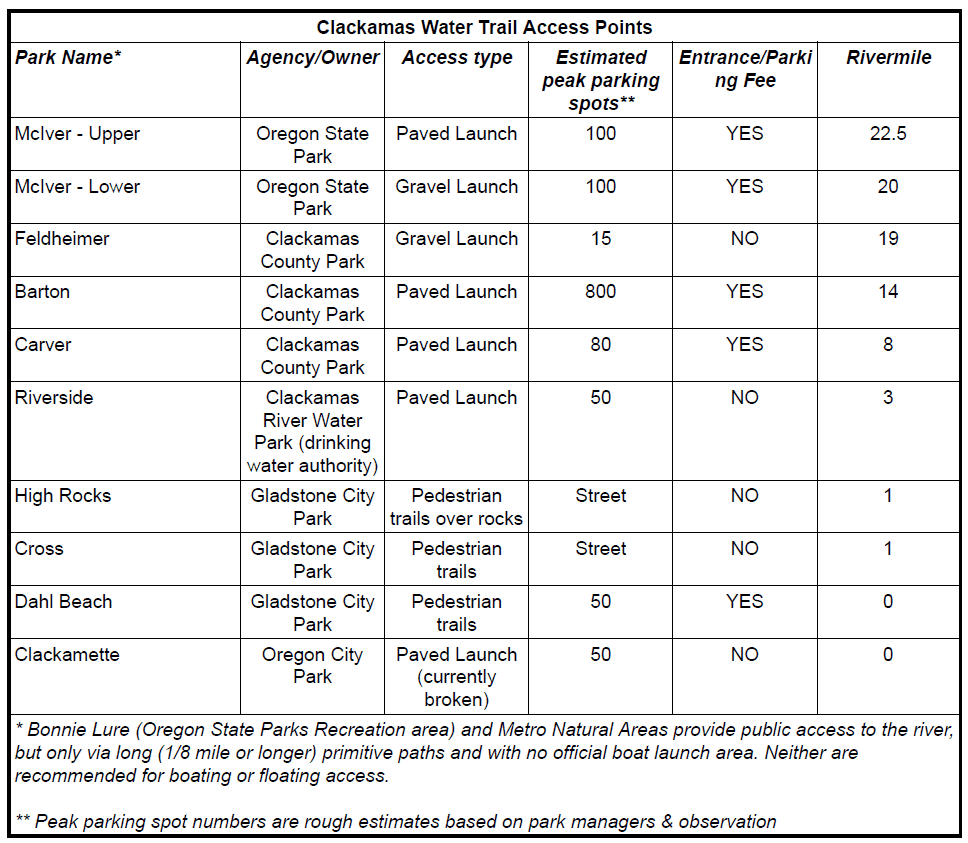
1st ever Clackamas river parking camera!
Barton Park is the most popular destination in the summer, and entrance can get backed up with long wait times. Thanks to a grant from Mt. Hood Tourism, Barton now has a live webcam at its entrance.
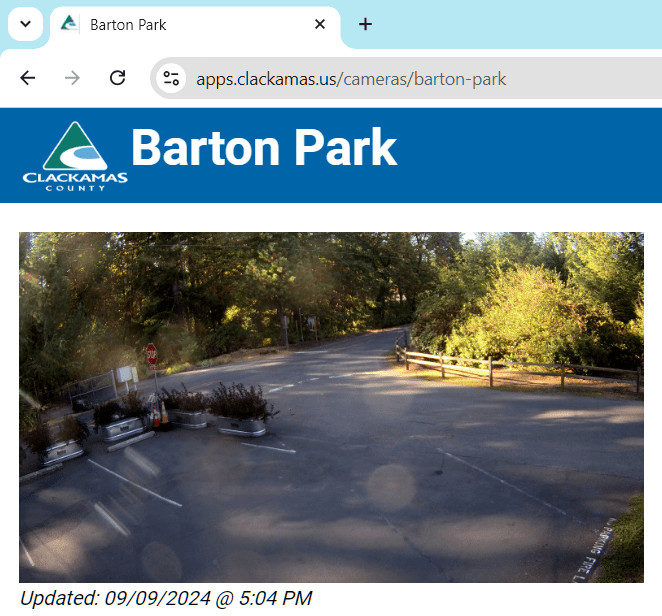
Strategies for running a shuttle on the Clackamas Water Trail
Private Shuttles – Two or more vehicles
This is the most common shuttle arrangement for floating or boating on the Clackamas River, and includes two or more cars. There are two ways to do this shuttle, and each has benefits and disadvantages:
- Meet at the take-out (end of the river trip), leave one or more cars there and shuttle all boats/people in other car(s) to the put-in.
- When you finish the float a car is ready to shuttle your group/gear back to the put-in vehicle, while additional cars left at the take-out are free to go.
- All gear can be left at the take out while ‘running the shuttle’ and retrieving the car(s) at the put-in.
- This is optimal for groups with minimal gear, unless the shuttle vehicle is large, has boat racks and/or a trailer.
- Meet at the put-in (start of the river trip), drop off boats, gear, tubes, floats, and most of the people. Either all the vehicles drive to the take-out and drivers are shuttled back to the put-in in one of the cars, or just two cars go to leave a single shuttle vehicle at the end.
- This is optimal for groups with boats and lots of gear that cannot be moved to a shuttle vehicle.
Professional Shuttle – Taxi/Ride Share
An increasingly common option for groups with one vehicle, ordering a taxi/ ride share service (Uber, Lyft, local taxi), this can be done one of two ways:
- Drop everyone and all gear at the put-in, a driver goes to take-out, leaves the car and rides back to the put-in with a taxi/ride share service.
- Park at the put-in and launch your trip. Call taxi/ride share service when you reach the take-out; they shuttle the group back to the put-in (if gear is minimal) or just the driver (to get the vehicle and drive back to take-out).
Professional Shuttle – Boat carrying and or people carrying
This is the safest and most vehicle efficient way to shuttle: pay someone to carry you and your boats from the take out (where you will end), allowing you to finish your float or paddle with all personal vehicles at the take out.
Hiring a shuttle takes planning and payment. Check the Clackamas Water Trail guides & outfitters page to see who provides boat & people shuttles, and conditions that may apply.
